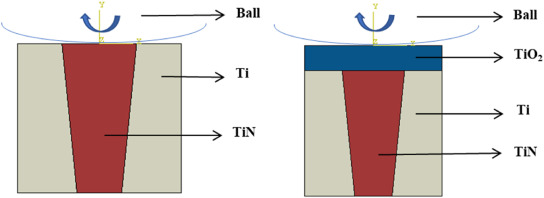Abstract
The preparation of cermet-modified layers on the surface of titanium alloys using lasers is an effective method to improve their wear resistance. In this study, a typical Ti-TiN composite cermet layer was prepared in situ on the surface of a titanium alloy by laser melting under a N2 atmosphere. The microstructure and wear behavior were characterized. The rapid cooling of the laser and the difference in the physical and chemical properties of the ceramics and metals led to the appearance of stacking faults in the TiN ceramic phase, dislocation cells in the Ti phase, and semi-coherent interfaces with stacking fault groups as transition structures. Friction test analysis shows that the formation of the Ti-TiN cermet layer significantly improves the surface wear resistance of the titanium alloy. In particular, the wear resistance is improved by approximately one order of magnitude at 500 ?C. The accumulative strengthening and stable strain hardening were formed by the deformation dislocation network in the TiN phase, polycrystalline transformation and dislocation interaction in the Ti phase. These microstructural transformations improve the wear resistance of the cermet layer. The amorphous-crystalline nanocomposite friction glaze layer formed in the wear scar at high temperatures further improves the wear scar strength, and the uniform plastic deformation during friction shear inhibits wear and balances the force distribution on both the phases during the friction process.

Keywords Plus:PLASTIC-DEFORMATIONGRAIN-SIZEALLOYRESISTANCEBEHAVIORSTEELSTRENGTHIMPACTPHASESTATE
Published in COMPOSITES PART B-ENGINEERING,Volume242;10.1016/j.compositesb.2022.110028,AUG 1 2022


